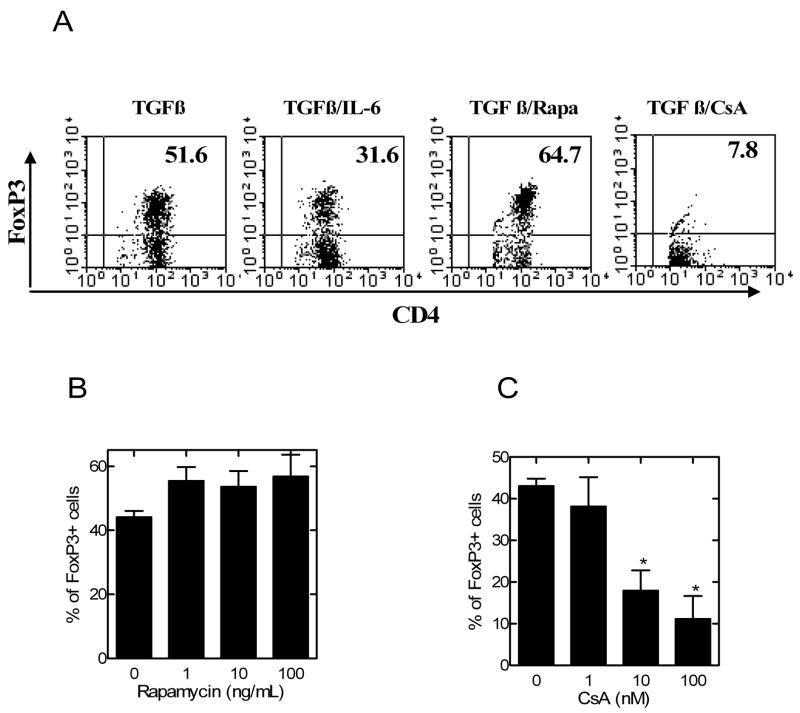Fig 2.
The effects of rapamycin and CsA on TGFβ-mediated generation of FoxP3+ cells from CD4 cells. CD4 cells were isolated from normal C57BL/6 mouse LNs and spleen by MACS. (A) The cells were stimulated with plate-bound anti CD3 Ab and soluble anti CD28 Ab, in the presence of TGFβ, or TGFβ plus IL-6, or TGFβ plus rapamycin (Rapa, 10 ng/ml), or TGFβ plus CsA (10 nM). The data shown are representative of at least 3 separate experiments with similar results. (B–C) CD4 cells were stimulated as in (A) with TGFβ and increasing concentration of rapamycin (1~100 ng/ml, B) or CsA (1~100 nM, C). 72 hours later, intracellular expression of FoxP3 was analyzed by gating on CD4 cells. The data shows the mean percentage of positive cells ± SEM, which are summarized from 3 to 4 separate experiments. * p<0.05, as compared with medium control.

